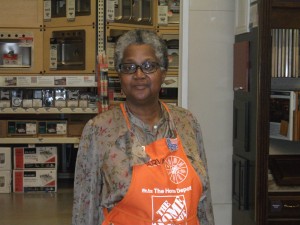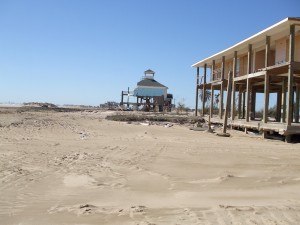 Let’s cut to the chase. If you have a relative on your gift list who loves the nooks and crannies of history, particularly those less well-known details behind the reality of the modern world, may I offer a suggestion? This suggestion emanates in part from the simple fact that I am a lover of history, an avid scholar of the factors that have influenced the shape and size of modern American cities—I am, after all, an urban planner—and the fact that I simply love good writing. I am, after all, also a trained professional journalist. Steel, a wonderful book by Brooke C. Stoddard, a veteran writer and former editor at Time/Life and National Geographic Books, has the kind of grand scope and vision that can fascinate the reader in your family who has an endless curiosity about the world.
Let’s cut to the chase. If you have a relative on your gift list who loves the nooks and crannies of history, particularly those less well-known details behind the reality of the modern world, may I offer a suggestion? This suggestion emanates in part from the simple fact that I am a lover of history, an avid scholar of the factors that have influenced the shape and size of modern American cities—I am, after all, an urban planner—and the fact that I simply love good writing. I am, after all, also a trained professional journalist. Steel, a wonderful book by Brooke C. Stoddard, a veteran writer and former editor at Time/Life and National Geographic Books, has the kind of grand scope and vision that can fascinate the reader in your family who has an endless curiosity about the world.
Or maybe that person is you. In that case I am either helping you figure out what to ask someone else to give you, or you can just go get it. And while I think e-books are wonderful, this is one case where I highly recommend getting the hardcover, in part so that you can sit back with that tactile feel of a real book in your hands and admire the copious color illustrations that accompany some splendid writing. Stoddard is a marvelous story-teller, but the photographs do the text more than ample justice.
Steel production was part of my own background growing up in suburban Cleveland. My father was a truck mechanic in a chemical factory, and I spent three summers there working my way through college. Chemical production fed other industries, including steel, in numerous ways. Antimony, for instance, is used in electroplating, which bonds paint to the steel frames of cars, and Cleveland grew on both steel and auto manufacturing, and there was a powerful symbiosis between all of them in an industrial ecosystem that employed tens of thousands. Steel was at the core of the growth of many Midwestern and eastern cities from Baltimore to Pittsburgh to Cleveland to Chicago. My story is at most tangential, but I learned what rough work it could all be. I even broke an ankle that first summer before starting college when the dome of an antimony kiln tipped over and trapped my leg. Such places were not necessarily for the faint of heart. I recovered, of course, and learned.
But learning from such immediacy to industry and taking in the grand sweep of its growth over time are two very different things. Writing industrial history can also be a labor of love, the financial rewards from book sales not always seeming to equal the toil involved in assembling detailed stories spanning centuries. I have read a few of these books in the past: for example, Uncommon Grounds by Mark Pendergrast, about the coffee industry, also a fine book. These are really stories to some extent about the evolution of human society in modern times, and how particular products changed our cities and whole nations. But few are as central to who we are today, and what our cities have become, than the steel industry. In more ways than almost any other industry, steel has been the game changer of human history.
And like most, it started from small things that turned into larger things that eventually turned into huge things. Stoddard takes us all the way back to the Stone Age and the descent from space of iron meteorites to explain the origins of the human relationship with the element that is the basis of steel before engagingly slow-walking us through human discoveries of the various alloys and their relative strengths and advantages for both peaceful and military uses over the first few millennia of human civilization. Empires like that of the Hittites grew, for example, on the advantage of iron over bronze, and of better ways of making steel instead of cast or wrought iron. The Romans gained iron works in Iberia from the Carthaginians and then added the refinement of tempering to improve the quality of the metals they used. Just as in modern times, military success was often fed by industrial success, which also meant that a nation of inventors gained huge advantages over its neighbors and competitors. And that’s all in the first chapter.
Stoddard’s second chapter pulls us into the industrial age, starting with British refinements in the use of coal to improve steel alloys, which depend on the right proportion of carbon to harden the iron in steel to produce the metals we rely upon today. German industrialists added their own refinements, but American steel makers like Andrew Carnegie burst onto the scene in the late 1800s to create enormous gains in the scale of production, coupled with the ready access of iron ore discovered in the Iron Range of northern Minnesota. In a matter of decades, the United States moved into a steelmaking category that dwarfed all others. It is, as most know, a history of ruthless men, but also of the uniquely philanthropic aspirations of a few like Carnegie. Labor and industry were often locked in mortal combat. For all his hard-bitten ambition, Stoddard notes, the U.S. could have done far worse than to have its industry transformed by a man who ultimately gave away more than 90 percent of his wealth to support charities like community libraries and concert halls rather than creating one massive family dynasty.
Here I must veer off on a small tangent. Carnegie helped nurture the career of a protégé named Charles Schwab, who first helped engineer the sale of Carnegie’s business to form the dominant U.S. Steel Corp., and later became the president of the competing Bethlehem Steel, which built the huge Sparrow Works in Baltimore. More than a quarter-century younger than Carnegie, Schwab, who functioned into the 1920s, was far more prone to flaunt his wealth, building a huge mansion in Manhattan that he later found nearly impossible to sell during hard times. Stoddard reveals that Schwab, despite his German ancestry, made a fortune providing steel for submarines and other military purposes to the United Kingdom in World War I well before American entry into the war, even at times when the official American position was neutrality. One favorite tactic was to ship the parts to Canada, where they could easily be assembled into submarines before being transferred to the British Navy.
My father, born in 1917 during that war and coming of age in the 1930s, tried after Pearl Harbor to join the U.S. armed forces, but was rejected for medical reasons. It turned out he suffered from appendicitis, which was remedied through surgery by a civilian doctor, and he spent the war years in New York City working in the steel mills.
His name was Charles Schwab. He used to joke that some people who did not know him thought that perhaps he was a close relative of the big guy and was learning the business from the bottom up. Nothing could have been farther from the truth. He was simply another blue-collar working stiff. He did have a rich uncle who sold uniforms to the U.S. Military Academy at West Point, but that is another story, one that never benefited him directly. Curiously, that was not his only brush with fame, for later in life he had to contend with Charles Schwab the broker. Well into retirement, tired of taking phone calls from misguided investors, he and my mother put the household phone in her name, and the errant calls ceased to find him. He was not related to that Charles Schwab, either. But when asked, I can at least say with a straight face that Charles Schwab was my father.
But back to the book. Without drilling down into all the magnificent details that Stoddard provides, the second part paints a portrait of what makes the steel industry function as a whole, starting with vivid descriptions of the iron ore barges that sail the Great Lakes, some of which are larger than the Titanic and the Queen Mary, yet get far less attention because they do not cross the oceans. After visiting the Iron Range, he boards one of those freighters in Superior, Wisconsin, and stays aboard across Lake Superior, the volatile lake whose nasty storm in 1975 swallowed the Edmund Fitzgerald, the subject of a doleful hit folk song a year later by Gordon Lightfoot. He stays with the crew as they transit Lake Huron and Lake Erie to Cleveland, where they finally unload their cargo of thousands of tons of iron ore pellets. Along the way, we learn about the modern amenities aboard such ships, and the challenges both they and their crews face, including fitting such huge vessels through narrow locks between the lakes or braving lake effect storms. It is a world few of us imagine or even try to think about. But it is a world that makes our world possible. Without steel, we have no modern skyscrapers creating the skyline of cities like New York and Chicago. Without steel, many of our modern appliances and conveniences simply are not possible. Without steel, our cities look like very different places. Just take a look at photos and drawings of American and European cities in the mid-19th century. Just imagine building railroads and mass transit without steel.
And so the book presses on—I won’t ruin the anticipation, except to say that eventually, as he must, Stoddard leads us to the decline of the monsters of steel on the American industrial scene, due more to lack of innovation than lack of resources. Former giants of urban steel making disappeared from older industrial cities like Pittsburgh and Cleveland. Other, more nimble, firms like Arcelor Mittal have moved to the forefront in recent decades, and Stoddard tells us why in a closing chapter titled, “Exeunt the American Gods.” The changes that have been wrought in our major cities are not for the faint of heart. Once again, in the cycle of history, steel manufacturing has changed, and the old days will not return. But steel will continue to change our lives.
Steel: From Mine to Mill, the Metal that Made America. Brooke C. Stoddard. Zenith Press. 304 pp.
Jim Schwab




